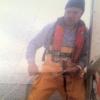MORE HANDBOOKS ARE ON THEIR WAY! We will let you know when they get here.
×
International Optimist Dinghy by Jason Builder - FINISHED - BlueJacket Shipcrafters - 1" = 1'
-
Recently Browsing 0 members
- No registered users viewing this page.


Recommended Posts
Create an account or sign in to comment
You need to be a member in order to leave a comment
Create an account
Sign up for a new account in our community. It's easy!
Register a new accountSign in
Already have an account? Sign in here.
Sign In Now